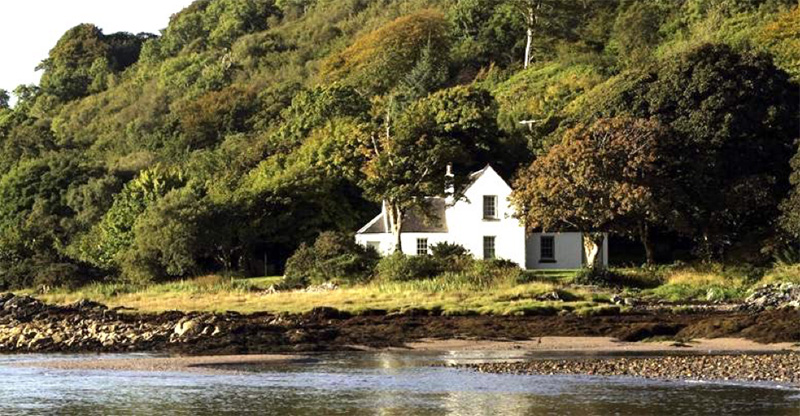Coastal Property Boundaries
Contents
Overview
There is a Common Law boundary presumption that the land located between the mean high tide and mean low tide is owned by the Crown. This does not include higher or lower tides resulting from a spring or neap tide. There is also a legal presumption that the Crown owns the bed of tidal rivers. Common Law presumptions are always open to rebuttal where there is evidence to the contrary, however, and often such evidence will be found in the ownership documents, hence the importance of obtaining a Boundary Search, which provides these documents.

Property Boundaries adjoining the Foreshore
Where a garden boundary abuts the foreshore the boundary extends only to the Tidal Water, ie. the very top of the foreshore. This will be the place on the land to where there is a regular ebb and flow of sea water. This acquires more importance where the private property abuts a tidal river as opposed to the coast itself. It is the regular ebb and flow of the water that decides whether the water is tidal or non-tidal, and each has a different set of common law boundary presumptions. During spring tides when the sea rises higher than usual this does not cause a breach of the Crown’s boundary.
Accretion and Diluvion
Through the years the general level of the foreshore may change. As it does so, then so does an abutting private garden boundary, thus one side of the boundary may gain some dry land and the opposite side may lose some. This principle is known as accretion and diluvion, i.e. one side of the boundary gaining land (or alluvium) and the other side losing it.
Boundary Search
All defences to a boundary dispute should begin with a Boundary Search. This is because property boundaries are mostly regulated by the Common Law as opposed to Acts of Parliament, and the Common Law has established a set of presumptions, but subject to evidence to the contrary being provided. It is also far less expensive to obtain a Boundary Search than to instruct solicitors to begin court proceedings, and there is every likelihood that the information you obtain will help you come to an amicable resolution.
Rebuttal of Common Law Presumptions
Evidence to the contrary may comprise both intrinsic evidence and extrinsic evidence.
Intrinsic Evidence
Intrinsic evidence would consist of the Title Register and Title Plan. These documents are official evidence of ownership and are beyond dispute. However, property boundaries are only shown in a general way in these documents and in the event of a dispute it is usually necessary to look for further documents and to ask experts to inspect the boundary.
Extrinsic Evidence
The most likely sources of extrinsic evidence are the Associated Documents that once provided proof of ownership. The Land Registry often copy important Deeds and these can be obtained using a Associated Documents search.
Boundary Search
The Boundary Search consists of the Title Registers, Title Plans, any Digitised Associated Documents and the Lease (in the case of leasehold properties).
All of these documents should be looked at whenever there is a boundary dispute, no matter the type of boundary, if only to establish whether or not there is rebuttal evidence.
Boundary Search 2 Properties
Obtain all the available property documents held to help resolve common boundary problems. For 2 Adjoining Properties.
£99.95Boundary Search 3 Properties
Obtain all the available property documents held to help resolve common boundary problems. For 3 Adjoining Properties.
£146.95Boundary Search 4 Properties
Obtain all the available property documents held to help resolve common boundary problems. For 4 Adjoining Properties.
£193.95


